The Ministry of National Defense yesterday refused to comment on a report in the Chinese Communist Party-run Guangming Daily saying that the Kuang Hua VI (KH-6) fast attack missile boats that have been in service in the Taiwanese navy since 2010 were plagued by deficiencies and were a “fantasy.”
Taiwan commissioned its first squadron of 11 KH-6 radar-evading fast-attack craft, produced by China Shipbuilding Corp, in May 2010. Since then, 20 more of the 170-tonne boats have entered service, the most recent 10 on Dec. 2 last year at Tsuoying Naval Base in Greater Kaohsiung.
The 31 boats comprise the navy’s three squadrons, which have been dubbed Hai Chiao (Sea Sharks).
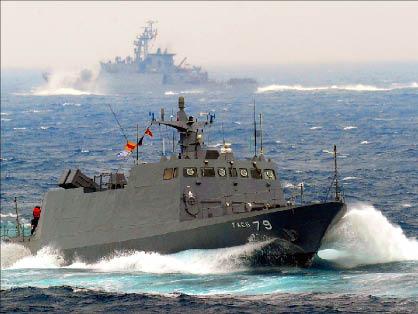
Photo: Chang Chung-i, Taipei Times
Each boat, which costs about US$12.3 million, comes equipped with four Hsiung Feng II anti-ship missiles with a range of 150km, as well as a 20mm anti-aircraft gun, a 7.62mm machine gun and decoy systems.
The KH-6s, which have gradually been replacing the Navy’s Israeli-made Hai Ou (Sea Gull)-class missile patrol boats, are integral to the defense of Taiwan’s waters. Given the narrowness of the Taiwan Strait, the boats would be able to attack targets at naval bases along China’s coast.
Some naval experts, including James Holmes of the US Naval War College, have hailed the capabilities of fast-attack craft as a potentially efficient asymmetrical counter to the growing Chinese military.
The Hsiung Feng III, currently under development by the Chung Shan Institute of Science and Technology, is also a main component of Taiwan’s emerging sea defenses.
However, the Guangming Daily on Tuesday claimed that the program was beset with problems and called the Sea Sharks a “fantasy.” At issue, the paper said, was the fact that the guns on the KH-6 needed to be operated manually, which undermined the craft’s “stealth” capability.
The article also said the craft was ill-suited for the rough weather conditions in the Taiwan Strait, pointing to an incident involving a prototype that lost power and became stranded on an outer seawall during Typhoon Jangmi in September 2008.
In all, the paper said, those deficiencies imposed “several restrictions” on the boats’ use.
Contacted by the Taipei Times yesterday, Ministry of National Defense spokesperson Colonel David Lo (羅紹和) said the ministry would not comment on Chinese media reports on Taiwan’s weapons systems.
Asked for comment, Holmes said the navy probably had corrected any deficiencies that lend themselves to easy fixes, such as clutter on the main deck.
“The point about handling well in heavy weather or at sea, however, is not something so easily corrected,” he said via e-mail. “The vessel is top-heavy because of its tall superstructure, which raises its ‘center of buoyancy’ and makes it bob around like a cork in high seas. That compromises its ability to go to sea and fight in all weather.”
“Improving the KH-6’s seakeeping ability would require a major redesign to lower weight within the vessel. That’s not something so easily solved,” Holmes said.
“Calling the craft a ‘fantasy’ overstates things in my view, so our Chinese friends could be indulging in some triumphalism. But I certainly see the KH-6 as only a transitional platform until something better is in the water,” he added.
Wendell Minnick, the Taipei-based Asia bureau chief for Defense News, said the deficiencies mentioned in the article were old ones and that he suspected the navy had ironed most of them out by now.
“The KH-6 missile patrol boat program has experienced developmental problems. One main problem is balancing the weight of larger missiles across the frame,” Minnick told the Taipei Times yesterday. “This has caused some problems in the past, but they appear to be seaworthy at present.”
“For the most part, Taiwan does produce, at the end of the day, impressive weapon systems and in many ways the Taiwanese are some of the best weapons producers in the world,” he said.
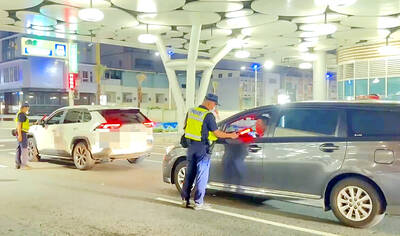
TRAFFIC SAFETY RULES: A positive result in a drug test would result in a two-year license suspension for the driver and vehicle, and a fine of up to NT$180,000 The Ministry of Transportation and Communications is to authorize police to conduct roadside saliva tests by the end of the year to deter people from driving while under the influence of narcotics, it said yesterday. The ministry last month unveiled a draft of amended regulations governing traffic safety rules and penalties, which included provisions empowering police to conduct mandatory saliva tests on drivers. While currently rules authorize police to use oral fluid testing kits for signs of drug use, they do not establish penalties for noncompliance or operating procedures for officers to follow, the ministry said. The proposed changes to the regulations require
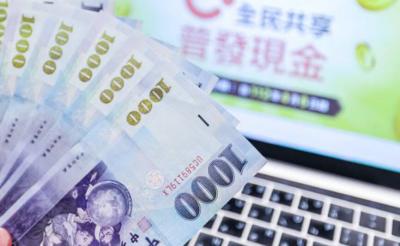
The Executive Yuan yesterday announced that registration for a one-time universal NT$10,000 cash handout to help people in Taiwan survive US tariffs and inflation would start on Nov. 5, with payouts available as early as Nov. 12. Who is eligible for the handout? Registered Taiwanese nationals are eligible, including those born in Taiwan before April 30 next year with a birth certificate. Non-registered nationals with residence permits, foreign permanent residents and foreign spouses of Taiwanese citizens with residence permits also qualify for the handouts. For people who meet the eligibility requirements, but passed away between yesterday and April 30 next year, surviving family members
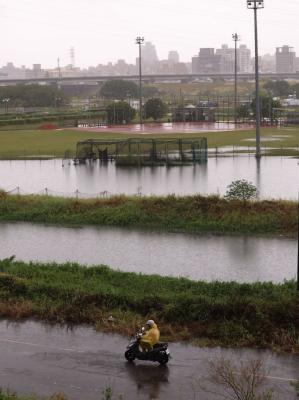
Taipei, New Taipei City, Keelung and Taoyuan would issue a decision at 8pm on whether to cancel work and school tomorrow due to forecasted heavy rain, Keelung Mayor Hsieh Kuo-liang (謝國樑) said today. Hsieh told reporters that absent some pressing reason, the four northern cities would announce the decision jointly at 8pm. Keelung is expected to receive between 300mm and 490mm of rain in the period from 2pm today through 2pm tomorrow, Central Weather Administration data showed. Keelung City Government regulations stipulate that school and work can be canceled if rain totals in mountainous or low-elevation areas are forecast to exceed 350mm in
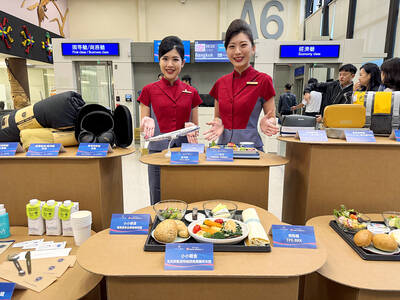
China Airlines Ltd (CAL) yesterday morning joined SkyTeam’s Aviation Challenge for the fourth time, operating a demonstration flight for “net zero carbon emissions” from Taiwan Taoyuan International Airport to Bangkok. The flight used sustainable aviation fuel (SAF) at a ratio of up to 40 percent, the highest proportion CAL has achieved to date, the nation’s largest carrier said. Since April, SAF has become available to Taiwanese international carriers at Taipei International Airport (Songshan airport), Kaohsiung International Airport and Taoyuan airport. In previous challenges, CAL operated “net zero carbon emission flights” to Singapore and Japan. At a ceremony at Taoyuan airport, China Airlines chief sustainability